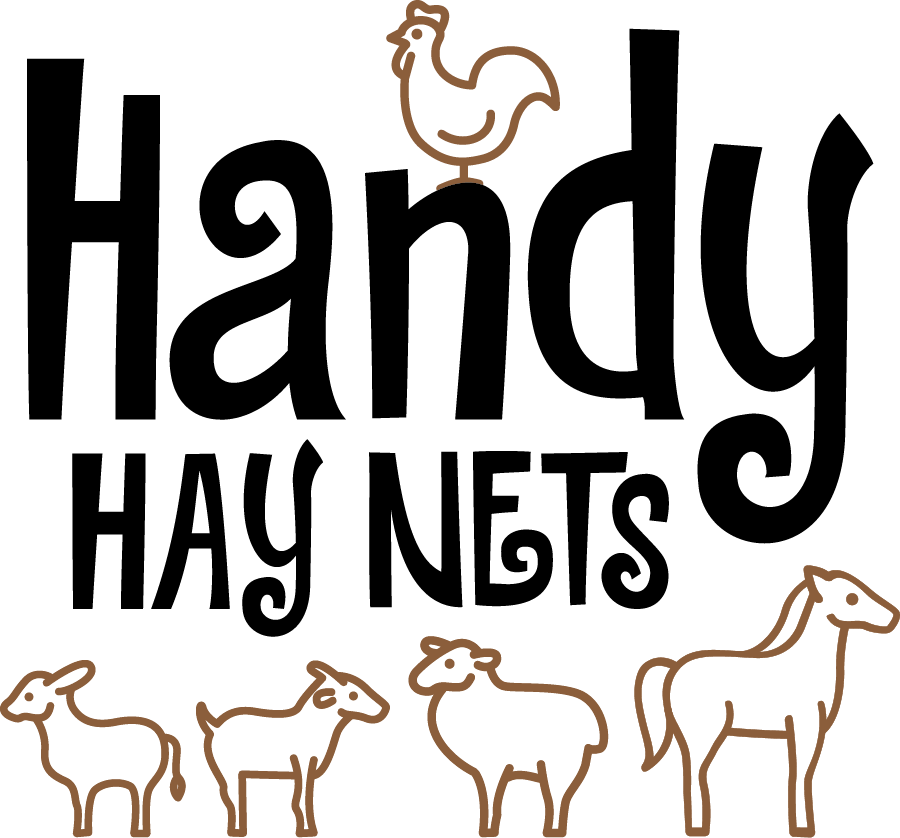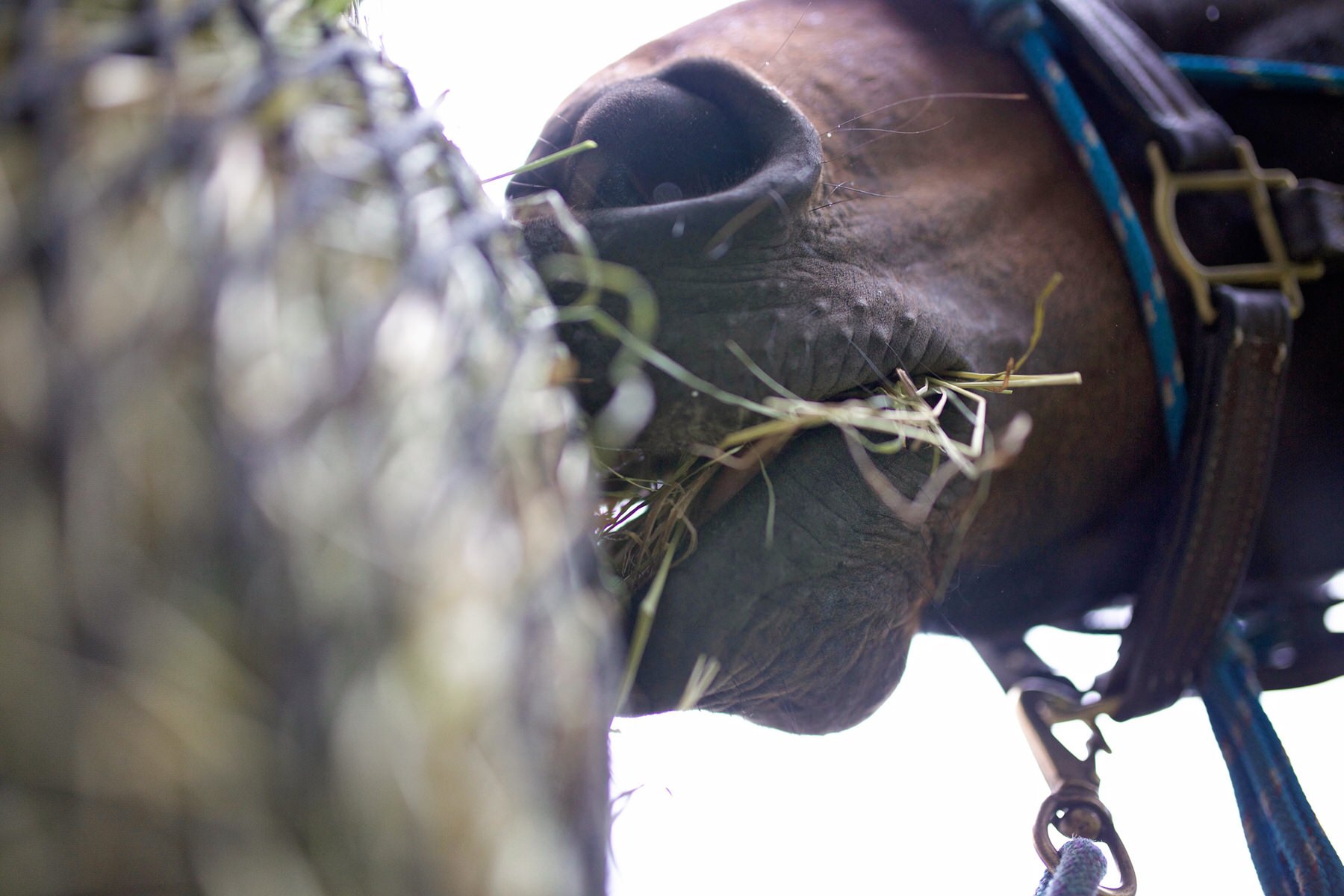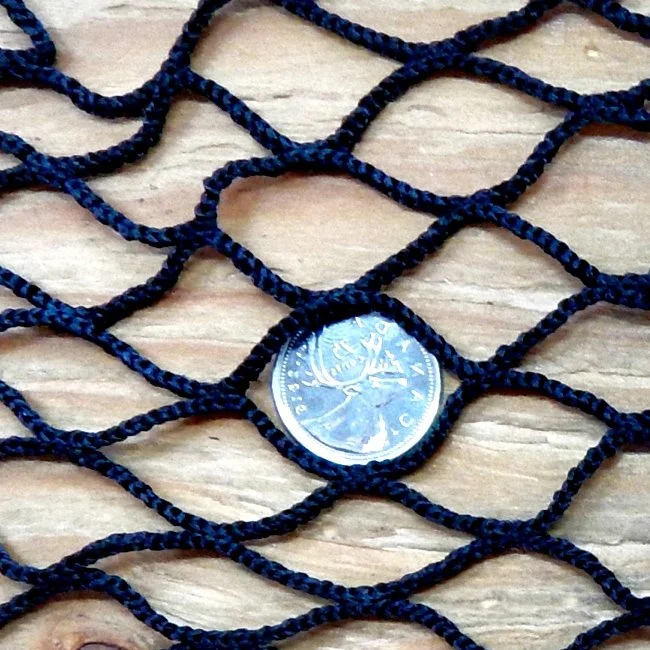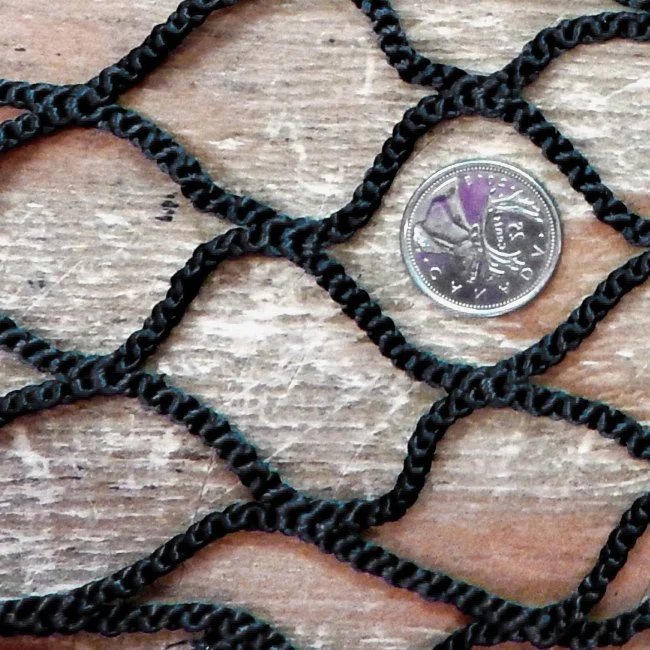Understanding Netting Sizes
Whether you're a Handy Hay Nets newbie or a long time supporter of our slow feeding system, you've probably noticed there are a rather intimidating amount of hay nets to choose from. Even for the seasoned slow feeding veteran, it can be difficult to choose a hay bag system that will work best for your farm.
Most people consider slow feeding to be a one-size-fits-all concept. We have discovered, however that there are a great variety of factors to consider when choosing the right system for your animal. The age of your critters, the time of year, and the coarseness of your hay, all have an influence on how comfortably your horse can self-regulate their own hay consumption.
If you find your animals are trashing their bags, gobbling hay, or continue to have weight problems, then you may want to reevaluate your hay and netting combinations.
Finding the right combination of hole and bag sizes, to use with which critter, during which season, with which hay, can be a bit of a brain tangling experience. So we've put together this guide to help demystify the process of setting up an ideal slow feeding hay net system that will work for you, your farm and your animals.
Let’s start with netting hole sizes.
2” Netting
This is the netting to start most draft horses or other large breeds such as warmbloods and senior horses. You can also use this hole size for cattle year-round.
Hay Types: grass hay, timothy hay, alfalfa and all others.
2" net with coarse hay.
Coarse hay.
1.5” Netting
This is the best netting to start most horses. Young, old, skinny, new to slow feeding horses, or ones that have feed-related anxiety, high-performance athletes, during trailering, and ideal during the cold fall and winter weather. It can also be used in the same way as 1” netting for drafts and larger breed horses. Cattle can do well on 1.5” netting if you only have a few cows.
Hay Types: all types, best for fine hay and straight alfalfa
1.5" net with fine hay.
1.5" HD net with coarse hay.
This hole size is perfect for the avid slow feeder horse that requires further slowing down of their hay and/or you own a small pony or miniature donkey or horse. This is a good hole size for smaller animals like rabbits, or to start mini's, donkeys, mules, alpacas, sheep, goats and lamas that are on grass hay (use a larger hole size for pure alfalfa to limit damage to your nets).
Hay Types: medium to coarse grass hay
Fine hay.
1" net with medium/coarse hay.
0.5" Netting
.5" hole size is perfect for donkeys, mules, small ponies, miniature goats, and minis trained to hay nets who are in a relaxed environment.
Hay Types: medium to coarse
*DO NOT USE FINE HAY OR SOAKED HAY WITH THIS SIZE OF NETTING
Medium/coarse hay.
0.5" net with medium/coarse hay.
It’s very important to be flexible with the hole size when using slow feeder hay bags with your animals, this will prevent damage to your nets in the long run. When the weather turns ugly your animals may be cold and require more food intake to stay warm, particularly if they do not go inside a warm barn at night. Stress is another factor that we need to keep in mind; when trailering, performing at a competition, or under intense training, please use a large hole netting with your regular slow feeder. You don’t need to give them their whole ration in it, just a flake or two.
Here at home when winter comes we use 7 bags for our 2 horses, who are kept together in a dry lot. 5 medium-sized bags in the 1" netting and 2 medium bags in the 1.5” hole size. With this setup we keep our horses moving around the lot, and even with an easy keeper, we have hay left in the 1.5" at the end of a long winter night!
Sometimes bags can get damaged by frustrated horses. We’ve just added this repair kit to our shop to keep netting out of landfills and help you make your bags last!














